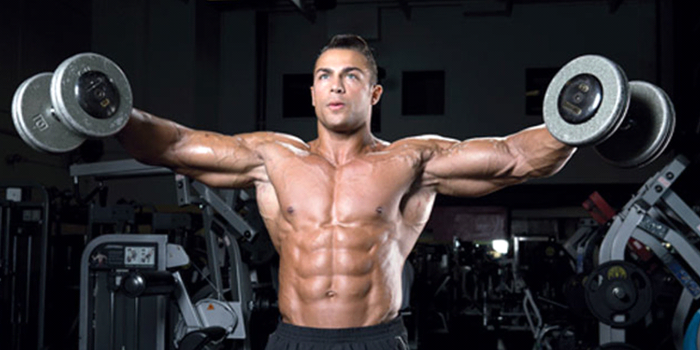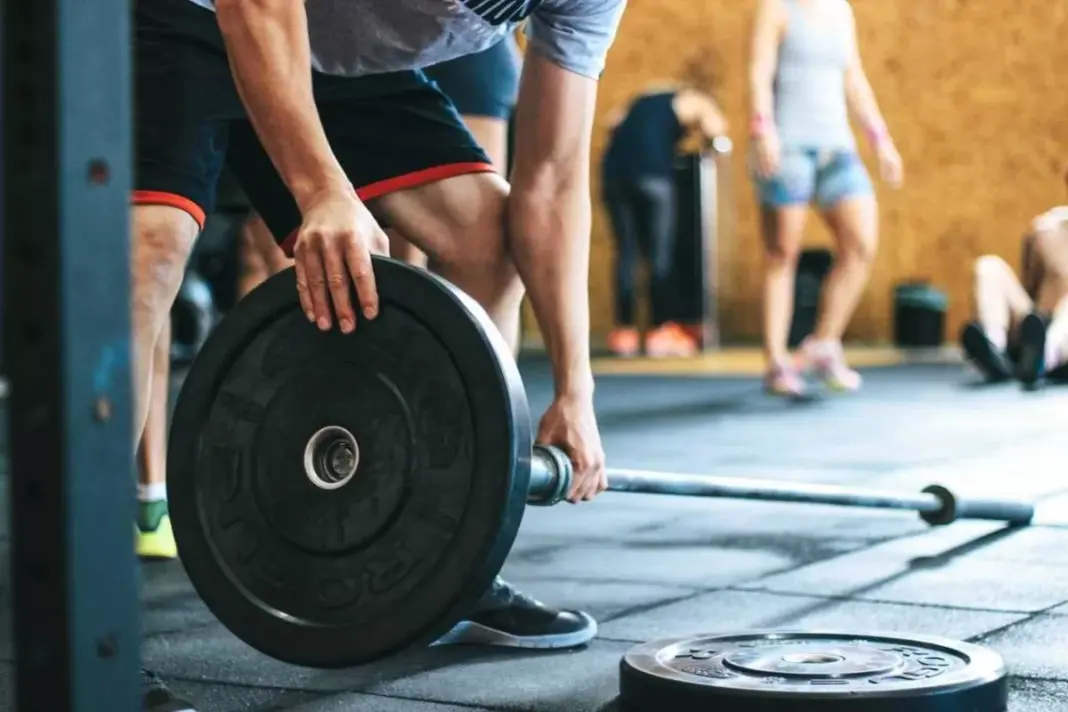Full-Body Training: Science & Programming for Maximum Muscle Growth
If you’ve been lifting for a while, you’ve probably noticed the constant debates about training splits: push-pull-legs, upper/lower, bro splits… But one style often gets overlooked by bodybuilders chasing maximum size — full-body training.
It’s usually labeled as “beginner-only” or “time-crunched lifter stuff.” The truth? Full-body training isn’t just for novices. When programmed intelligently, it’s one of the most effective ways to build muscle, increase strength, and improve recovery — even for advanced bodybuilders.
This guide breaks down the science behind full-body training, how to structure it for hypertrophy, and practical strategies for lifters at every level.
🧠 Why Full-Body Training Works
More Frequency = More Growth Opportunities
Muscle protein synthesis (MPS) — the process of building muscle after training — lasts roughly 24–48 hours post-workout. If you’re training a muscle only once per week (like many bro splits), you’re leaving days of missed growth on the table.
By training each muscle 2–4 times per week, you keep stimulating MPS more often, which can accelerate progress. Full-body workouts naturally provide that frequency.
Better Movement Quality & Practice
When you train the squat, bench, or row multiple times a week, you get more practice with the lifts. This improves coordination, efficiency, and long-term strength progression — which translates into more muscle.
Efficient Volume Distribution
Instead of blasting your chest with 20 sets in one brutal session (where the last 10 sets are sloppy), full-body training lets you spread that same volume across multiple days. That means more high-quality sets at higher performance levels.
Hormonal & Recovery Benefits
Full-body workouts stimulate large muscle groups in a single session. This leads to a stronger systemic anabolic response (increased testosterone, growth hormone, and IGF-1 release).
At the same time, because no single muscle group is annihilated, local recovery is easier, making it possible to hit that muscle again within 48 hours.
💪 Who Should Use Full-Body Training?
- Beginners: Perfect for building a base of strength and muscle, with frequent practice on big lifts.
- Busy Lifters: If you only have 2–3 days per week to train, full-body ensures no muscle gets neglected.
- Intermediate/Advanced Lifters: Great for breaking plateaus, rebalancing weak points, or building strength alongside hypertrophy.
- Bodybuilders in Cutting Phases: Full-body training helps maintain muscle while keeping training volume manageable when calories are low.
🏋️ Key Principles of Full-Body Training
To maximize results, you need to go beyond “just do squats, bench, and deadlifts every session.” Here’s how to structure it:
Prioritize Compound Movements
Full-body training thrives on multi-joint lifts that recruit large amounts of muscle:
- Squats
- Deadlifts / RDLs
- Bench Press / Incline Press
- Pull-Ups / Rows
- Overhead Press
- Dips
These movements hit multiple muscle groups at once, giving you the biggest bang for your buck.
Balance Push and Pull
Every workout should include:
- A push (bench press, overhead press, dip)
- A pull (row, pull-up, face pull)
- A leg dominant move (squat, lunge, hinge variation)
This keeps your physique balanced, improves posture, and protects shoulders and knees.
Hit Every Major Muscle Group Each Session
A simple checklist for full-body programming:
- Quads
- Glutes/Hamstrings
- Chest
- Back (lats + traps/rhomboids)
- Shoulders (front, side, rear)
- Arms (biceps + triceps)
- Core
You don’t need 5 exercises for each — just one quality movement per category per session.
Control Training Volume
Don’t confuse frequency with overtraining. A full-body session doesn’t mean 30 sets. Instead, aim for:
- 2–4 sets per muscle group per session
- Across 3 full-body sessions = 6–12 quality sets per week (the sweet spot for hypertrophy).
📆 Full-Body Training Templates
Here are proven structures bodybuilders can use depending on their training frequency and goals.
3-Day Full-Body Hypertrophy Program (Classic Approach)
Day 1 (Heavy Focus)
- Back Squat – 4×6
- Bench Press – 4×6
- Barbell Row – 4×8
- Overhead Press – 3×8
- Weighted Pull-Up – 3×8
- Barbell Curl – 3×10
- Skull Crusher – 3×10
Day 2 (Moderate Focus)
- Romanian Deadlift – 4×8
- Incline Dumbbell Press – 4×8
- Seated Cable Row – 4×10
- Dumbbell Lateral Raise – 3×12
- Chin-Ups – 3×8–10
- Hammer Curl – 3×12
- Rope Pushdown – 3×12
Day 3 (Pump/Volume Focus)
- Front Squat – 3×10
- Dumbbell Bench Press – 3×12
- Chest-Supported Row – 3×12
- Arnold Press – 3×12
- Face Pulls – 3×15
- Concentration Curl – 3×12–15
- Overhead Rope Extension – 3×12–15
✅ This balances heavy loading, moderate volume, and higher-rep pump work across the week.
4-Day Full-Body (Advanced Strength & Size)
Day 1 & 3 = Strength focus (lower reps, heavier weight)
Day 2 & 4 = Hypertrophy focus (moderate weight, higher reps)
This approach is brutal, but perfect for advanced lifters who want maximum frequency.
2-Day Minimalist Full-Body (Busy Lifter)
Day A
- Squat – 4×6
- Bench Press – 4×6
- Barbell Row – 4×8
- Biceps + Triceps Superset – 3×12 each
Day B
- Deadlift – 4×5
- Overhead Press – 4×6
- Pull-Ups – 4xAMRAP
- Lateral Raise + Face Pull Superset – 3×15 each
✅ Even on two days, you’ll hit every muscle with enough volume to grow.
⚡ Advanced Programming Strategies
Exercise Rotation
Rotate key lifts every 4–6 weeks (e.g., back squat → front squat, barbell row → chest-supported row) to avoid plateaus.
Rep Range Periodization
Alternate sessions:
- Heavy (4–6 reps) for strength & neural efficiency
- Moderate (8–12 reps) for hypertrophy
- High (12–20 reps) for metabolic stress & endurance
Pre-Exhaust or Supersets for Bodybuilders
Want to bring up weak points? Start your full-body workout with an isolation exercise for lagging muscles. Example: lateral raises before presses to hit shoulders harder.
Conditioning Integration
For athletes or lifters who care about performance:
- Add loaded carries, sled pushes, or sprints at the end.
They hit traps, core, and legs while boosting work capacity.
🧩 Practical Takeaways
- Full-body training isn’t just for beginners — it can be adapted for any level of bodybuilding.
- Aim for 2–4 full-body sessions per week depending on your schedule and recovery.
- Use compound lifts as anchors, then add accessory/isolation work for symmetry.
- Manage total volume per session so you’re fresh enough to train the same muscle again later in the week.
- For aesthetics: emphasize weak points by prioritizing them early in the workout.
- For strength: place your heaviest compound lift first in each session.
🔥 Final Word
A lot of bodybuilders ignore full-body training because they think it’s too basic or “not hardcore.” But the science is clear: hitting muscles more frequently, with smart volume, builds more size and strength than just blasting them once a week.
Whether you’re a beginner learning the ropes, a busy lifter squeezing in 2 sessions a week, or an advanced bodybuilder looking to smash a plateau, full-body training can deliver serious results.
Remember — the best training split isn’t about what looks cool on paper. It’s about what keeps you progressing, recovering, and showing up consistently.
Train smart. Train often. And don’t sleep on full-body workouts — they might just be the missing link in your physique.





